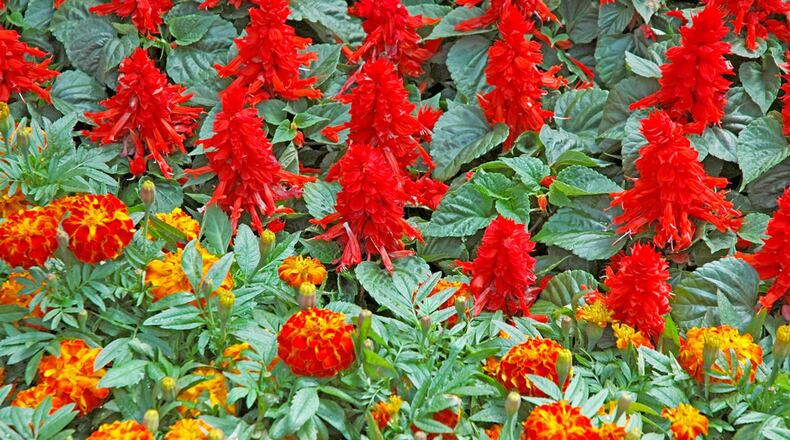New colors and varieties will ensure a dazzling landscape or a sizzling mixed container for the whole gardening season. One group that you probably find new to you is the Saucy series. Saucy Wine and Saucy Red have both found fame in the Southern Living Plant Collection, while Saucy Coral looks as though designed with the artist gardener in mind with one of the rarest colors in the gardening world.
The Saucy series is relatively large getting 2 to 3 feet tall and 2 to 3 feet wide. You’ll find that all of the Salvia splendens will do their part to bring in hummingbirds and butterflies. Because of their height, the Saucy series also make great cut flowers. Deadheading produces more flowers throughout the summer.
The Vista series is another group that I have always liked. These are more compact reaching only 1-foot in height and 8 to 10 inches in width. The Vista series comes in six colors and a mix. My color designer son seems to make sure white flowers are part of his mixes and this year I have to say the Vista White has been extraordinary.
Picante, Salsa, and Sizzler are also compact when compared to the Saucy series and have so many colors you’ll question why they’re called scarlet sage? They originate in Brazil, so the marketing or varietal names are certainly appropriate.
Color from spring through frost means this annual form of salvia is an exceptional buy and ranks as a strong performer. Its spiky texture is most welcome in a garden world dominated by round flowers.
The ideal site would get morning sun and mid-afternoon shade. The soil should be very well drained. Plant on raised beds or amend heavy soils with the addition of compost or humus. Plant hardiness zones 8-10 may find these to be returning perennials with superior drainage.
While preparing the soil, incorporate two pounds of a slow-release, 12-6-6-fertilizer or something balanced per 100 square feet of planting area. Space the plants 10 to 12 inches apart, planting at the same depth they are growing in the container.
Water deeply, once a week, particularly during long dry periods.
Adding a good layer of mulch will reward the gardener with happier plants by keeping the root zone cooler and the moisture from quickly evaporating. Prune spent flowers to encourage branching and blossoms. This will be important for your late summer and fall display.
Feed a month after planting with a light application of fertilizer and every six to eight weeks through September.
The scarlet sage comes in almost any color, including two toned, so it helps to know your color combinations. I have loved my son’s mixed container of Saucy Coral with Black and Bloom salvia and lime green Sidekick ornamental sweet potatoes. And the others with the Vista White that seems to complement all other colors. Don’t be afraid to use white; it is super as the sun sets and even reflects moonlight at night.
Hummingbirds, butterflies and dazzling beauty are pretty good companions for the scarlet sage giving you a sense of “green thumb satisfaction.”
———
(Norman Winter is director of the Coastal Georgia Botanical Gardens at the Historic Bamboo Farm, University of Georgia Cooperative Extension, and author of “Tough-as-Nails Flowers for the South” and “Captivating Combinations: Color and Style in the Garden.” Follow him at: @CGBGgardenguru
About the Author
